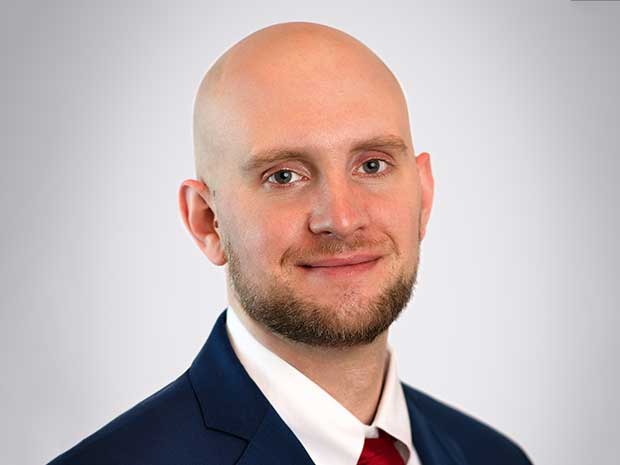This article delves into the complex interplay between bankruptcy proceedings and tax entity classification, focusing on the strategic considerations surrounding the revocation of S corporation status. It highlights the significant tax implications for S corporations or Qualified Subchapter S Subsidiaries (QSUBs) in bankruptcy, particularly concerning cancellation of debt income (CODI) and the potential benefits of revoking S corporation status to mitigate tax liabilities.
Executive summary: Distressed S Corporations
Introduction
Taxpayers in bankruptcy are often confronted with a litany of legal hurdles and tax planning may take a backseat. While tax is generally not at the forefront of thought in bankruptcy proceedings, taxpayers should be aware of the critical implications of their tax entity classification. The purpose of this article is to discuss the dichotomic dilemma that arises when an S corporation or its QSUB (defined below) is entering bankruptcy, but the owner(s) themselves are not.
Background
One of the greatest tax concerns of a financially distressed company undergoing a debt restructuring is generally cancellation of debt income, colloquially referred to as (“CODI”). At a very high level, debtors generally realize and recognize income when all or a portion of their current debt is actually or deemed satisfied for an amount less than the original outstanding liability.1
In terms of tax entity classification, S corporations are unique and are generally chosen for their flow-through / corporate hybrid structure. As a consequence, for federal income tax purposes, CODI passes through to the shareholders who increase their basis in their stock by such amount.2 Shareholders who have suspended losses may benefit from the basis increase which could free up suspended losses to help offset CODI.3
There are two major relevant exclusions to the general rule of income recognition, which are the insolvency and bankruptcy exclusions.4 Generally speaking, the bankruptcy exclusion excludes from gross income any amount of indebtedness discharged in a Title 115 case6. The bankruptcy exclusion is only applicable if the discharge of indebtedness is granted by the court or pursuant to a plan approved by the court. In the context of a subchapter C corporation (and generally an S corporation), the bankruptcy exclusion is applied at the corporate level; such that if the corporation is the debtor in bankruptcy, CODI is excluded from taxable income. Alternatively, if the debtor entity is a qualified subchapter S subsidiary (“QSUB”)7, the bankruptcy exclusion only applies if the owner (i.e., the S Corporation parent) is itself a party to the Title 11 case.8 Put differently, an S corporation owner of a QSUB who is not independently insolvent or a party to a bankruptcy proceeding is generally not covered by an exclusion, and may have recognition of CODI, even if its QSUB is in bankruptcy and the discharge of indebtedness is granted by the court or pursuant to a court-approved plan.
Illustrative example
The ability to revoke an S election during bankruptcy allows a shareholder to potentially shift significant tax consequences to the debtor entity, and ultimately to the creditors. For example: a QSUB in a Title 11 case has outstanding secured debt of $150x, unsecured debt of $50x, and assets with a fair market value (“FMV”) of $175x with a tax basis of $75x. Assume that the QSUB is owned by an S corporation, which is wholly owned by a single shareholder, neither of whom are in bankruptcy nor are insolvent. Per a court sanctioned plan, the QSUB assets are auctioned off for their FMV of $175x which is used to satisfy the total outstanding debt of $200x.
- The asset sale generates $100x of gain.
- The amount of forgiveness in excess of the auction proceeds generates CODI of $25x.
The sole shareholder will thus bear the tax liability from both the $100x gain and the $25x of CODI but will receive no proceeds from the sale.
If however, the shareholder revokes the S election, forcing the debtor to convert into a C corporation, the $100x gain would have been “blocked” and taxable at the subsidiary corporation level (reducing available proceeds for creditors). Moreover, since the C corporation subsidiary is in bankruptcy, the $25x of CODI would be excluded but would reduce corporate level tax attributes (to the extent available).
Here, the conversion would cause the unsecured creditors to receive significantly less recovery due to the C corporation tax liability and could potentially drive the estate into administratively insolvency.
Majestic Star
Traditionally, it was widely accepted that S corporation elections, similar to net operating losses (“NOLs”), were considered part of an S corporation’s bankruptcy estate. This concept was established by the case Trans-Line West9, which laid the foundation for several related decisions.
Enter Majestic Star, a case involving a QSUB10 debtor subsidiary (“MSC”) in a Title 11 bankruptcy case, where the S corporation owner/parent (the “Company”) of the QUSB was not in bankruptcy.11 The pivotal issue was whether the Company’s decision to revoke its S corporation election status, causing itself and MSC to convert to regarded C corporations for federal tax purposes, was a post-petition transfer of property of the bankruptcy estate.
As an S corporation, the Company was not subject to federal or state taxation and its income and losses would pass through to its shareholder (“Shareholder”). MSC had properly been treated as a QSUB of the Company, thus it was not treated as separate from the Company for federal tax purposes. As such, MSC’s income and losses would also ultimately pass through to the S corporation’s Shareholder.
As of the petition date, both the Company and MSC retained their status as an S Corporation and as a QSUB, respectively. The Shareholder and the Company did not file for bankruptcy nor were they debtors in any of the petitions in question. After the petition date, the Shareholder revoked the Company’s S Corporation status and thus the Company converted to a regarded C Corporation. As a result of the revocation, MSC’s status as a QSUB was also automatically terminated (and thus converted to a regarded C Corporation) since it no longer met the requirement of being wholly owned by an S-corporation.
As a result of the entity conversion, MSC owed $2.26 million in state income taxes. The trustee filed a complaint stating that the revocation caused an “unlawful post-petition transfer” of MSC’s estate property. The bankruptcy court came to the same conclusion and ordered the Company and the IRS to take all measures needed to restore the original status of MSC as a QSUB of the Company by restoring the Company’s S Corporation status. Both the Company and the IRS12 appealed the decision. The IRS argued that MSC's status as a QSUB was not “property” of the MSC estate because MSC “never had a right to claim, continue, or revoke” it’s status “either before or after it filed its bankruptcy petition”, and that no “transfer” of estate property occurred when the Company revoked its S election and triggered the loss of MSC's QSUB status.13
On appeal, the 3rd Circuit appellate court disagreed with the bankruptcy court and held that the S election was not property of the bankruptcy estate. The court reasoned, in part, that even if “QSUB status were property at all, it would be property of the subsidiary's S-corp parent”.14 Thus, in effect, the 3rd Circuit afforded the Shareholder the ability to revoke the S election and significantly improve their tax position.
Vital Pharmaceutical
In a recent 2023 bankruptcy case, Vital Pharmaceuticals15, the S corporation debtor (“Debtor”) auctioned its assets for $370 million and as such, the tax liability from the gross income would flow up to the sole shareholder (“Shareholder”). All of the proceeds from the sale were to go to secured and unsecured creditors with none remaining to cover this tax liability. To avoid the tax, the Shareholder tried to revoke Debtor’s S election during bankruptcy. The court however, concluded that S election was property of the estate and thus could not be revoked by the Shareholder.
In determining that the S election status was property of the estate, the court determined that the reasoning of the 3rd Circuit in Majestic was deeply flawed.16 The court’s scathing rebuke of Majestic is predicated upon the court’s view that the 3rd Circuit applied fallacious logic and poor reasoning; however, a fulsome description of the Vital court’s opposition is beyond the scope of this article. The Vital court in their conclusion mention that the Shareholder reaped the advantages of the Debtor’s S corporation status, thereby avoiding double taxation for 30 years. The court further concludes that since the S corporation status grants it the valuable privilege of avoiding/diverting tax liability, this status is considered an asset of the estate and is thus safeguarded by the Bankruptcy Code’s automatic stay.17
Conclusion
The Tax Court has yet to rule on this matter, and it remains uncertain whether it ever will. In the decade following the Majestic ruling, shareholders have leveraged the decision to circumvent substantial tax liabilities by revoking their S corporation status, thereby shouldering the regarded C corporation with the tax burden. However, the recent Vital ruling may prompt other courts to reconsider their stance on the issue. The Majestic case was adjudicated in the 3rd Circuit, while Vital was decided in the 11th Circuit. If an S corporation is located within either of these jurisdictions, the corresponding ruling will likely take precedence. Shareholders in similar circumstances are advised to seek counsel from their tax advisor.
1Section 61(a)(11).
2Section 1366(a); 1367(a).
3Section 1366(d).
4Section 108(a)(1), note the insolvency exclusion is beyond the scope of this article but is incredibly common and relevant in debt restructuring transactions.
5Note that a Chapter 7 (liquidating) or Chapter 11 (reorganizing bankruptcy) are two examples of title 11 bankruptcies.
6In this article two prominent U.S. Code Titles are referenced: Title 26 the “Internal Revenue Code”, and Title 11 the “Bankruptcy Code”. Herein, all section references are to the Internal Revenue Code of 1986 (the “Code”), as amended, or to underlying regulations; and Title 11 will be used in reference to the Bankruptcy Code.
7Section 1361(b)(3)(B).
8Reg. section. 1.108-9(a)(2).
9In re Trans-Line West, Inc., 203 B.R. 653 (Bankr. E.D. Tenn. 1996).
10Qualified Subchapter S Subsidiary (which is treated as an entity disregarded as separate from the S Corporation for U.S. federal income tax purposes).
11Majestic Star Casino, LLC v. Barden Development, Inc. (In re Majestic Star Casino, LLC), 716 F.3d 736 (3d Cir. 2013).
12As a result of the bankruptcy court’s order, the IRS’s tax claim lost being treated as an administrative expense of the bankruptcy estate, which would have allowed the government to be paid before most other creditors. Id. at 746.
13Id. at 745.
14Id. at 760.
15In re Vital Pharm., No. 22-17842-PDR (Bankr. S.D. Fla. Oct. 6, 2023).
16Id. at 16.
17Id. at 34.
RSM contributors
-

-
 Nate MeyersManager
Nate MeyersManager
Tax resources
Timely updates and analysis of changing federal, state and international tax policy and regulation.
Subscribe now
Stay updated on tax planning and regulatory topics that affect you and your business.
Washington National Tax
Experienced tax professionals track regulations, policies and legislation to help translate changes.

